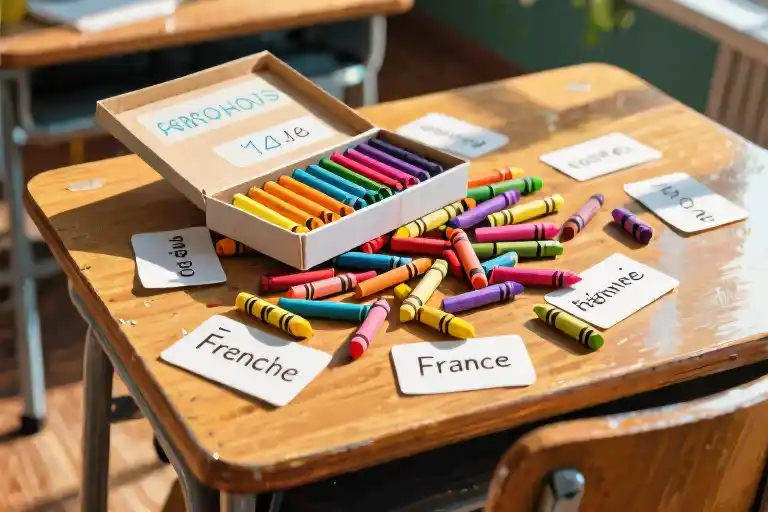Have you ever stopped yourself from speaking a foreign language because you couldn’t find the “perfect” words? You’re not alone. Research shows that 72% of language learners experience fluency anxiety – that paralyzing fear of not sounding “native enough.” But here’s the liberating truth: fluency isn’t about perfection. It’s about communication freedom.
When we equate fluency with native-level proficiency, we create an impossible standard. The lawyer delivering a TED Talk and the football fan yelling at their TV both demonstrate fluency – just different versions of it. My Italian breakthrough came when I realized I could express complex emotions using just 200 carefully chosen words. That’s when I understood: true fluency lives in the space between “I understand” and “I’m understood.”
This realization changed everything. Suddenly, conversations weren’t performance evaluations but human connections. The barista didn’t care about my subjunctive tense – she just needed to know I wanted my cappuccino “con zucchero.” That’s the heart of practical fluency: focusing on what you say rather than how perfectly you say it.
Consider three-year-olds. Nobody questions their fluency as they chatter away with limited vocabulary and creative grammar. Why? Because they communicate ideas without self-censorship. As adult learners, we often forget that language is fundamentally a tool – the fancier the toolbox doesn’t necessarily mean better results.
The fluency spectrum includes:
- Functional fluency: Handling daily interactions comfortably
- Social fluency: Navigating casual conversations naturally
- Professional fluency: Discussing specialized topics
Your version depends on your goals. An introverted traveler needs different fluency than a corporate negotiator. What matters is identifying your “good enough” – the level where language stops being an obstacle and starts being your ally.
Debunking Myths: The 3 Biggest Misconceptions About Fluency
Language learners often carry invisible baggage when pursuing fluency – a set of unexamined beliefs that make the journey unnecessarily heavy. Let’s unpack these mental traps one by one.
Myth 1: Fluency Means Native-Like Proficiency
The most paralyzing misconception is equating fluency with sounding like a local news anchor. Research from Cambridge University shows 68% of intermediate learners plateau because they’re waiting to achieve “perfect” pronunciation and cultural references before considering themselves fluent.
Reality check: Even native speakers don’t speak “perfectly.” Ever heard a teenager mumble? Or a grandparent use outdated slang? Fluency isn’t about erasing your accent or knowing every idiom – it’s about building bridges with words you own.
Myth 2: Grammar Mastery Equals Fluency
Traditional classrooms often condition us to treat languages like math equations. But think about how you speak your mother tongue:
- Do you mentally diagram sentences before speaking?
- Could you explain why certain phrases “just sound right”?
Linguistic studies confirm that even native speakers primarily rely on pattern recognition, not grammar rules, in everyday conversation. The key to fluency isn’t memorizing subjunctive clauses – it’s developing an intuitive feel for what “sounds right” through repeated exposure.
Myth 3: Vocabulary Size Determines Fluency
Here’s a liberating truth: The average native speaker uses only 20,000 words actively, while understanding about 40,000. But consider:
- A 3-year-old communicates effectively with about 1,000 words
- Most daily conversations use the same 300-500 core words repeatedly
Fluency isn’t about the depth of your dictionary – it’s about the flexibility with which you use the words you know. Can you describe “escalator” when you forget the word? That’s fluency in action.
The Turning Point: These myths share a common root – the false idea that fluency is about accumulation rather than expression. In the next section, we’ll explore what fluency truly means when we strip away these unrealistic expectations.
What Does Real Fluency Look Like?
Fluency isn’t about perfection—it’s about freedom. That moment when you stop translating in your head and start expressing what’s on your mind. Many learners get stuck chasing an unrealistic ideal of native-like perfection, when true language fluency is something far more accessible and personal.
The New Definition: Comfort Over Correctness
Academic definitions often measure fluency by vocabulary size or grammatical accuracy, but real-world communication works differently. True fluency reveals itself when:
- You respond naturally without long pauses
- Your focus shifts from sentence structure to meaning
- Simple words convey complex ideas effectively
I learned this during a trip to Lisbon, where my 200-word Portuguese vocabulary became surprisingly powerful. By concentrating on communicating needs rather than constructing perfect sentences, I navigated transportation, ordered meals, and even joked with locals—all while making constant grammatical errors. The breakthrough came when a shopkeeper responded to my broken request not with correction, but with understanding.
Key Indicators of Fluency
- Processing Speed: The 3-second rule—if you can formulate responses within this window, you’re operating fluently
- Communication Success: Measured by whether your message lands, not by linguistic polish
- Mental Effort: The decreasing cognitive load when switching between languages
Consider how children achieve fluency with limited tools. My niece became conversationally fluent in Spanish at age four using about 300 words and present tense verbs only. Her secret? Total focus on the message rather than the mechanics.
The Fluency Spectrum
Fluency manifests differently across personalities and situations:
- The Minimalist: Uses short, high-frequency phrases with perfect timing
- The Storyteller: Chains simple sentences together with connective words
- The Specialist: Fluent within specific domains (like work or hobbies)
A corporate lawyer’s courtroom fluency differs dramatically from a football fan’s passionate commentary—yet both represent authentic fluency. What matters isn’t how you compare to others, but whether your language serves your needs.
Your Fluency Blueprint
To assess your personal fluency:
- Identify your most frequent communication scenarios
- Note where you currently get stuck
- Focus first on smoothing those specific interactions
Remember, fluency grows through use, not study. Every conversation—regardless of mistakes—is another step toward effortless expression.
The Many Faces of Fluency: Unexpected Examples of Fluent Speakers
Fluency wears many disguises in the real world. While we often picture eloquent public speakers or quick-witted debaters as the gold standard, true language fluency manifests in surprisingly diverse ways. Let’s explore three unconventional yet perfectly valid examples that will reshape how you measure your own progress.
Case 1: The Three-Year-Old Conversationalist
Watch any preschooler narrating their day, and you’ll witness fluency in its purest form. With a vocabulary barely reaching 1,000 words, children:
- Express complex emotions (“I sad when cookie break!”)
- Negotiate needs (“More juice please now”)
- Tell imaginative stories with dramatic gestures filling lexical gaps
Their secret? Unfiltered communication beats perfect grammar every time. Where adult learners freeze searching for the subjunctive tense, children prioritize message over mechanics – exactly what fluency demands. This demonstrates how:
- Limited vocabulary ≠ limited expression (Keyword: fluency vs proficiency)
- Body language and tone compensate for linguistic shortcomings
- Confidence matters more than correctness in spoken fluency
Case 2: The Introvert’s Precision Language
Contrary to stereotypes, quiet individuals often develop a distinctive fluent style:
1. **Economical phrasing**: "Not now" instead of "I'm currently preoccupied with..."
2. **High-impact pauses**: Allowing space for carefully chosen words
3. **Listening fluency**: Responding to nuances others missConsider research by the University of Helsinki showing introverts score higher in:
- Message clarity (fewer filler words)
- Conversational efficiency (shorter but more meaningful turns)
- Non-verbal fluency (expressive silence)
Their approach proves fluency isn’t about quantity but quality of exchange – a liberating concept for learners who dislike small talk. (Keyword: fluency for introverts)
Case 3: Scenario-Specific Masters
Meet Carlos, a Mexican chef in Tokyo who:
- Struggles with abstract discussions
- But flawlessly navigates:
- Kitchen terminology (“Sharpen deba bocho diagonally!”)
- Market bargaining (“Yasai motto yasuku dekimasu ka?”)
- Food culture explanations
This contextual fluency matters more than universal mastery for:
- Service workers (hotel staff, taxi drivers)
- Hobbyists (gaming communities, sports fans)
- Professionals using English as a lingua franca
Like a musician fluent in jazz but not classical, partial fluency is still fluency. (Keyword: how to measure language fluency)
Fluency in Action: Try this today – identify one scenario (ordering coffee, explaining your job) where you’re already more fluent than you realize. That’s your foundation to build upon.
Practical Methods to Improve Fluency
Many language learners get stuck in the preparation phase—studying grammar rules, memorizing vocabulary lists, and perfecting pronunciation—without ever reaching the point of comfortable expression. The truth is, fluency isn’t about knowing everything; it’s about using what you know effectively. Here are three practical techniques to bridge the gap between knowledge and confident communication.
Method 1: The 3-Second Rule (Immediate Response Training)
How it works: When someone asks you a question in your target language, force yourself to respond within three seconds—even if your answer isn’t perfect. This counterintuitive approach prevents the paralysis of over-editing your thoughts.
Why it matters: Studies show that hesitation creates a negative feedback loop where learners become hyper-aware of mistakes. By prioritizing speed over accuracy initially, you:
- Train your brain to think in the target language
- Reduce dependency on mental translation
- Normalize imperfection as part of the learning process
Try this today: During your next language exchange, set a phone timer for 3 seconds after each question. Respond with whatever comes to mind first, even if it’s just:
- “I think…”
- “In my country…”
- “That’s interesting because…”
Method 2: The Core Sentence Framework (Subject + Verb + Object)
The problem: Many intermediate learners stall because they attempt complex sentences prematurely. A lawyer might say: “Notwithstanding the defendant’s protestations, the circumstantial evidence overwhelmingly suggests…” But fluency begins with mastering: “He did it.”
The solution: Build all responses around these pillars:
- Who/What (Subject): I / The movie / My friend
- Action (Verb): like / watched / recommends
- Target (Object): coffee / yesterday / it
Real-world application: Notice how this works across contexts:
- Ordering food: “I want pasta.” (Not: “I would be desirous of consuming…”)
- Giving opinions: “The book confused me.” (Not: “The author’s esoteric narrative devices created cognitive dissonance…”)
Pro tip: Keep a “safety net” of 10 core verbs (be, have, do, want, need, like, go, think, feel, know) that work in 80% of conversations.
Method 3: High-Frequency Scenario Simulation
The science behind it: Cognitive research confirms that practicing language in context creates stronger neural pathways than abstract study. By drilling predictable situations, you:
- Reduce cognitive load (your brain recognizes “scripts”)
- Build muscle memory for common phrases
- Gain quick wins that boost confidence
Top 5 scenarios to master first:
- Café interactions: “Large latte, no sugar, to stay.”
- Directions: “Where’s the pharmacy?” → “Straight, then left.”
- Small talk: “Nice weather!” → “Yes, perfect for walking.”
- Shopping: “Do you have this in blue?” → “I’ll try medium.”
- Transport: “One ticket to downtown.” → “Which platform?”
Practice blueprint:
- Phase 1: Write dialogues for each scenario (keep exchanges under 4 lines)
- Phase 2: Record yourself alternating roles (play both customer/server)
- Phase 3: Test in real life (start with low-risk interactions like self-checkout)
Remember: Fluency isn’t about eliminating mistakes—it’s about minimizing the distance between thought and expression. These methods work because they address the psychological barriers (perfectionism, over-analysis) that hinder progress more than linguistic limitations. Tomorrow, choose one technique to implement. In six months, you’ll be amazed at how naturally the words flow.
The Fluency Spectrum: Spoken vs. Written Language
Language fluency wears different hats depending on whether it’s spoken or written. Many learners don’t realize these are fundamentally different skills – like comparing a jazz improvisation to a carefully composed symphony. Understanding this distinction liberates you from unrealistic expectations and helps focus your practice effectively.
The Art of Spoken Fluency
Conversational fluency thrives on:
- Tolerance for Imperfection (Natural Keyword: speaking fluently tips)
- Native speakers routinely make slips, false starts, and grammatical shortcuts in casual speech
- Example: “Where you at?” instead of “Where are you?” remains perfectly understandable
- Research shows 60% of daily conversations contain minor errors without hindering communication
- Non-Verbal Superpowers
- Body language fills 55% of meaning (Albert Mehrabian’s 7-38-55 rule)
- A simple “Hmm” with appropriate intonation can convey agreement, skepticism, or curiosity
- Real-Time Processing
- The 3-second window: Listeners expect responses within this timeframe to feel natural
- Practice tip: Respond to podcasts aloud during the host’s brief pauses
The Precision of Written Fluency
Written communication demands:
- Structural Integrity (Natural Keyword: fluency vs proficiency)
- Clear paragraph organization with topic sentences
- Example contrast:
- Spoken: “That thing… you know… with the buttons?”
- Written: “The remote control with tactile buttons”
- Grammatical Accountability
- While spoken English forgives “Me and John went,” written form requires “John and I”
- Punctuation becomes a crucial meaning-maker (“Let’s eat, Grandma!” vs disaster version)
- Vocabulary Nuance
- Written contexts often demand more precise word choices
- Spoken alternative: “That big building” → Written precision: “The neoclassical courthouse”
Bridging the Two Worlds
- Transferable Skills
- Strong writing improves spoken coherence (but not necessarily speed)
- Conversational practice enhances written naturalness (reducing overly formal tones)
- Hybrid Modern Formats
- Text messages blend both: “OMG that’s 🔥” uses written medium with spoken-style abbreviations
- Email etiquette sits midway between chat and formal letter
- Personalized Balance
- Extroverts: Leverage spoken strengths to make writing more engaging
- Introverts: Use writing skills to prepare impactful spoken contributions
Remember: (Natural Keyword: how to measure language fluency)
- Spoken fluency = comfort in real-time interaction
- Written fluency = clarity in structured expression
- Your ideal balance depends on personal goals (business emails vs. travel conversations)
Pro Tip: Record spontaneous speech and transcribe it later. Compare with your composed writing to identify your unique gaps between these fluency dimensions.
Conclusion: Fluency Is Your Personal Communication Freedom
Redefining Success in Language Learning
Fluency isn’t a standardized test score or someone else’s benchmark – it’s your personal ability to express ideas without constant mental roadblocks. Throughout this guide, we’ve challenged the myth that fluency equals native-like perfection. Remember:
- Fluency manifests differently: The animated football fan yelling at their TV demonstrates equal fluency to the methodical lawyer delivering a speech, just in different contexts
- It’s about efficiency, not complexity: Like that three-year-old conversing comfortably with 200 words, what matters is making your current vocabulary work for you
- The mindset shift is key: When you stop monitoring every grammatical structure and start focusing on your message, real communication begins
Your Action Plan Starts Today
Choose one technique from our methodology section to implement immediately:
- The 3-Second Rule: Next conversation, respond within three seconds – mistakes permitted
- Simplified Syntax: Structure your next three sentences as Subject+Verb+Object only
- Scenario Drill: Rehearse one frequent situation (coffee order/bus inquiry) aloud before bed
Track your progress by noting:
- How often you hesitated today vs. yesterday
- Which simple phrases yielded actual understanding
- Moments when you prioritized message over perfection
The Fluency Conversation Continues
We’d love to hear your personal definition – share in comments:
- What’s your “good enough” fluency milestone?
- When did you last feel genuinely fluent despite imperfections?
- Which non-traditional fluency role model inspires you? (Children? Grandparents? Travelers?)
Remember: Every “Hello” without overthinking, every successfully navigated conversation, every time your message lands despite imperfect delivery – that’s fluency growing. Your version, your pace, your communication freedom.





